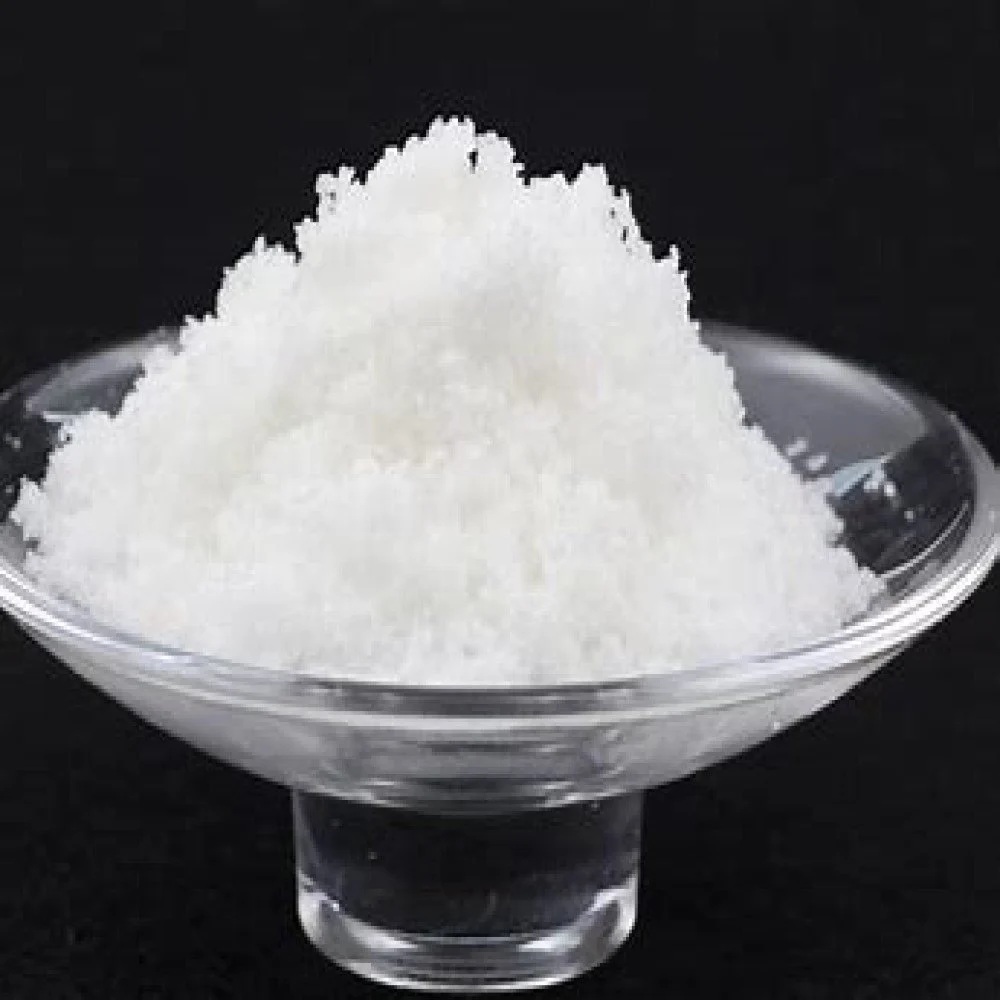We unleash your business potential by maximize the business innovation.
Send EmailCerium Chloride, Cerous Chloride, Cerium (III) Chloride, 18618-55-8
🧪 CERIUM CHLORIDE – FULL ENGLISH ANALYSIS
1️⃣ Physical and Chemical Properties
-
Chemical Name: Cerium(III) Chloride Heptahydrate
-
Chemical Formula: CeCl₃·7H₂O
-
CAS Number: 18618-55-8
-
EC Number: 242-376-1
-
Molecular Weight: 372.58 g/mol
-
Appearance: White crystalline powder
-
Melting Point: ~90 °C (decomposes via water loss)
-
Solubility: Soluble in water and alcohol
-
Stability: Hygroscopic, degrades in humid conditions
-
pH (aqueous solution): Slightly acidic (~4.0–5.0)
-
Toxicity: Low, but laboratory handling precautions recommended
2️⃣ Detailed Applications
-
Organic synthesis: Used as a Lewis acid catalyst
-
Laboratory reagent: For rare earth element analysis
-
CeO₂ production: Soluble precursor compound
-
Optical glass additive: Adjusts refractive index
-
Nanotechnology: Starting material for CeO₂ nanoparticle synthesis
-
Ceramic additive: Used as pigment and functional additive
-
Defense industry: Precision polishing in laser optics
3️⃣ Synonyms, CAS, EC, and Codes
| Descriptor | Value |
|---|---|
| CAS Number | 18618-55-8 |
| EC Number | 242-376-1 |
| UN Number | 3077 (environmentally hazardous) |
| Customs HS Code | 2846.90.00.00.19 |
| Other Names | Cerium Chloride, Cerous Chloride, Cerium(III) Chloride |
4️⃣ Alternatives / Substitutes
-
Cerium Nitrate (Ce(NO₃)₃): Alternative in synthesis and CeO₂ production
-
Cerium Acetate (Ce(CH₃COO)₃): Substitute as catalyst and soluble form
-
Lanthanum Chloride (LaCl₃): Similar catalytic and optical applications
-
Zirconium Chloride: Alternative in polymer and coating systems
5️⃣ Sectoral Compatibility Table
| Sector | Compatibility | Notes |
|---|---|---|
| Organic Chemistry | ✅ | Used as Lewis acid catalyst |
| Laboratory & R&D | ✅ | Reagent for rare earth analysis |
| Ceramics & Glass | ✅ | Refractive index additive |
| Nanotechnology | ✅ | Starting material for CeO₂ synthesis |
| Cosmetics | ❌ | Not suitable for direct use |
| Food & Pharma | ❌ | Prohibited due to chloride content |
6️⃣ Common Names
-
Cerium salt
-
White cerium crystal
-
Cerium chloride powder
-
Rare earth chloride
7️⃣ Production
-
Starting Material: Cerium-rich ores
-
Process: Reaction with hydrochloric acid → Filtration → Crystallization
-
Grades Available: Technical and high-purity grades
-
Main Producer Countries: China, India, USA
-
Commercial Purity Grades: 99% to 99.99%
8️⃣ Mandatory Sectors and Processes
-
Organic synthesis labs: Preferred as Lewis acid catalyst
-
Nanomaterial synthesis: Starting material for CeO₂ nanoparticles
-
Optical glass production: Used to adjust refractive index
-
Defense optics: Used in precision polishing for laser systems
